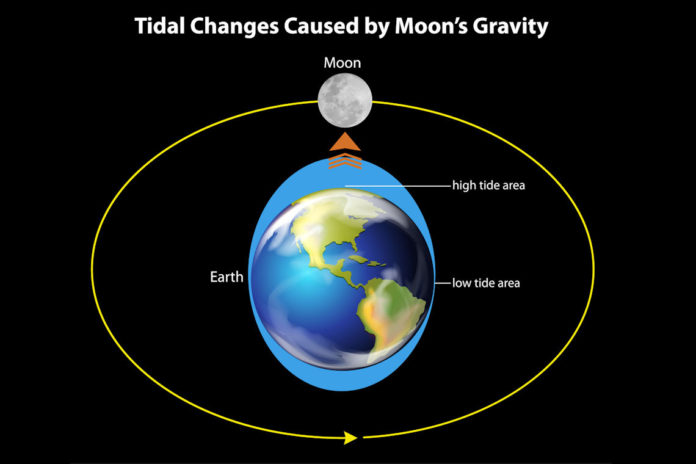Ocean tides are the rise and fall of sea levels during a day. The rise and fall of the ocean is caused by the moon and the earth’s rotation. The sun also affects the ocean. This causes the highest and lowest tides to occur.
Factors That Affect the Ocean’s Tides
The Effect of the Moon
The moon’s gravity is strong enough to pull the water in the ocean towards it. A bulge or high tide is created when the moon’s pull is the greatest. When the pull is the weakest, a trough or low tide is created. Each day, the moon’s gravity creates two bulges and two troughs.
As the earth rotates, these bulges and troughs move across the earth’s surface. This usually results in two high and two low tides a day (every 24 hours and 50 minutes). The tidal period is slightly longer than one day due to the revolution of the moon around the earth.
The Effect of the Sun
Spring Tides: The sun also aligns with the moon at times. The two gravitational forces then combine with one another. This results in the highest tides. These are the spring tides. Spring tides occur every two weeks or so.
Neap Tides: Sometimes, the sun and moon oppose one another. This happens when the two bodies are at right angles to one another. The sun’s gravity opposes the moon’s gravity. Therefore, the moon’s gravitational pull is weaker. The result is the creation of the lowest tides during the year. These are the neap tides. They occur a week after each spring tide.
Reflections
Vocabulary
- neap tide
- spring tide
- tides
Notes
- Ocean tides are created by the moon’s gravitational pull.
- Where the moon’s pull is the greatest, a bulge in the oceans (high tide) is created.
- When the sun and moon are aligned, the highest tide (spring tide) is created.
Bibliography
- A Hydrosphere Study Guide
- About the Hydrosphere
- Tides and Ocean Levels, NOAA

